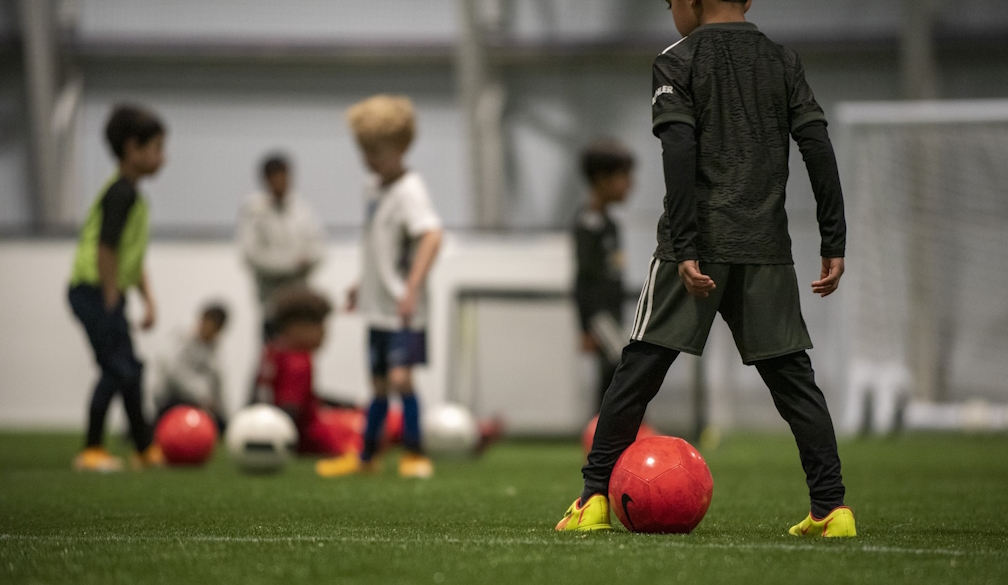Why Repetition is the Secret Weapon in Youth Soccer Training (And How It Works for Ages 4–12)

Why Repetition is the Secret Weapon in Youth Soccer Training (And How It Works for Ages 4–12) URL - why-repetition-is-the-secret-weapon-in-youth-soccer-training-and-how-it-works-for-ages-4-12
Why Repetition Builds Lasting Football Skills in Children
Missed Passes, Hidden Progress
It’s easy for a parent to wonder why their child still struggles with simple moves after weeks of practice. Yet beneath each imperfect pass lies the very process that creates mastery. For children aged 4–12, football development doesn’t hinge on natural talent or early brilliance—it’s built through structure, patience, and countless small repetitions that eventually add up to confidence and success.
The Science of Repetition in Youth Training
Repetition is the cornerstone of motor skill learning. Every time a child dribbles, passes, or shoots, the brain strengthens neural connections that make those actions smoother and more automatic. Over time, this leads to muscle memory—skills that flow naturally, even under pressure.
In children between 4 and 12, the nervous system is especially receptive to repeated actions, making this period critical for:
- Cognitive reinforcement: linking correct technique with quick decisions.
- Emotional regulation: familiar drills reduce nerves and boost comfort in games.
- Long-term retention: skills practiced regularly are less likely to fade during breaks.
Repetition ensures players respond instinctively rather than hesitating, giving them both confidence and speed on the pitch.
Why Age-Specific Coaching Matters
The difference between a 4-year-old beginner and a 12-year-old pre-teen is enormous—not only physically, but in attention span, emotional maturity, and learning style. A one-size-fits-all training model fails to meet these needs.
- Ages 4–6: focus on fun, balance, and basic coordination.
- Ages 7–9: introduce structured drills, passing, and small tactical ideas.
- Ages 10–12: advance into strategy, higher intensity drills, and decision-making.
Adapting the pace and content to each stage keeps children motivated while preventing frustration or burnout.
Fun as the Engine of Progress
Repetition doesn’t need to feel repetitive. When skills are taught through creative games, children absorb the fundamentals without even realizing it.
- Dribbling relays turn coordination into a playful race.
- Passing challenges teach timing and awareness in team settings.
- Obstacle courses blend agility with adventure, making practice exciting.
By combining enjoyment with structure, children show up eager to participate, which reinforces consistency—the real key to improvement.
Building Confidence Through Small Wins
Every time a child completes a pass, controls the ball, or scores in training, they experience a “small win.” These moments accumulate and fuel belief in their own ability.
Confidence built through repetition creates:
- Resilience: mistakes become manageable when improvement is visible.
- Team contribution: assured players communicate and cooperate more effectively.
- Social growth: positive experiences with peers strengthen friendships and self-esteem.
Confidence isn’t something taught—it’s developed through steady exposure to achievable challenges.
Choosing the Right Weekly Program
Not all football programs deliver the same experience. Quality weekly training should include:
- Age-specific sessions that match developmental needs.
- A curriculum designed to progress over time.
- A balance of drills and games that keep players motivated.
- Qualified, encouraging coaches who focus on growth, not just results.
- A supportive environment that values teamwork as much as individual skills.
One program that consistently meets these standards is https://www.wemakefootballers.com.au/weekly-training. Their proven model combines repetition, age-tailored coaching, and fun to ensure children develop as both players and individuals.
Final Word
True football mastery begins with repetition, not tricks. By practicing simple movements again and again in an age-appropriate, supportive environment, children build the foundation for long-term success. With the right program, those repeated touches on the ball transform into confidence, resilience, and a lifelong love of the game.

